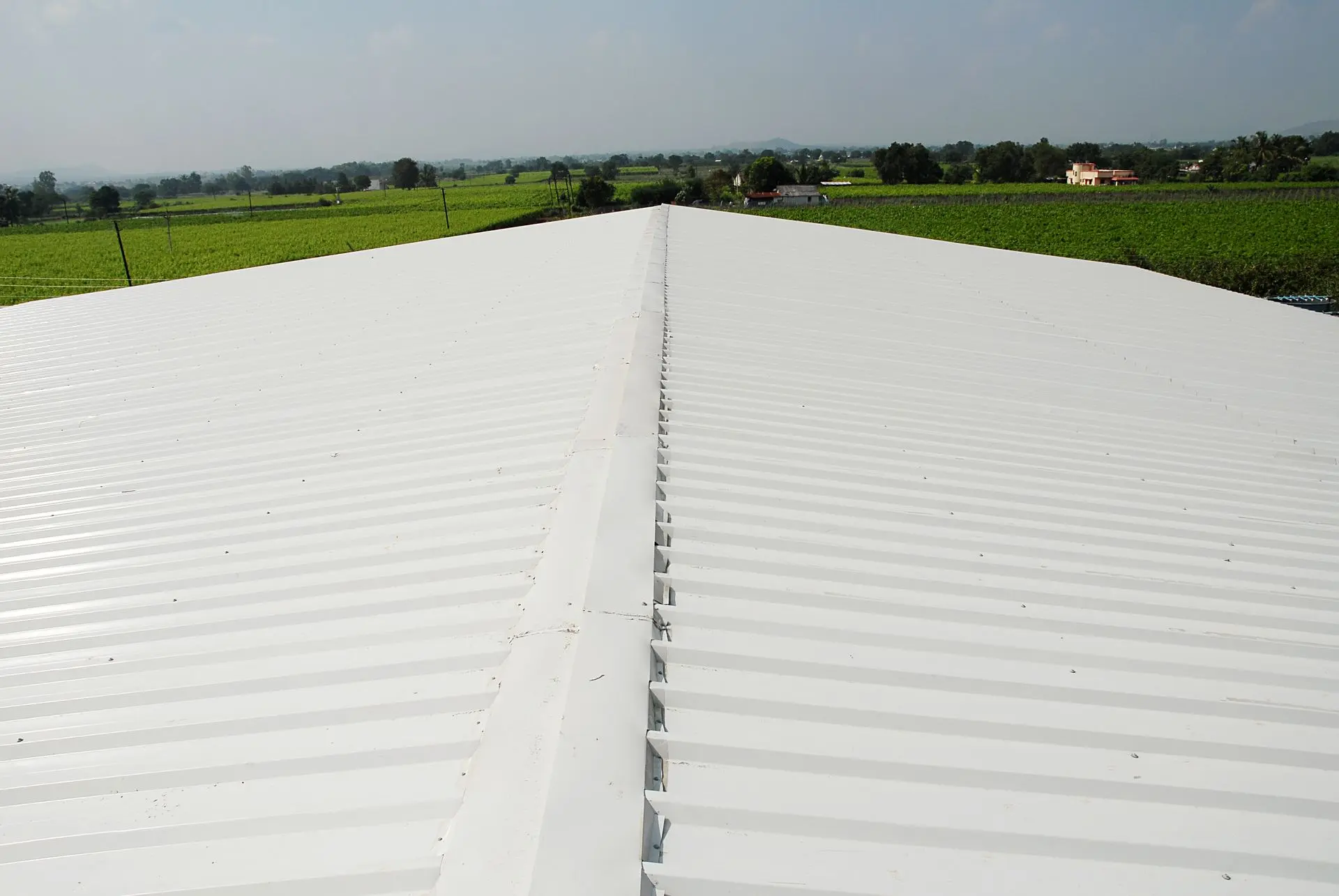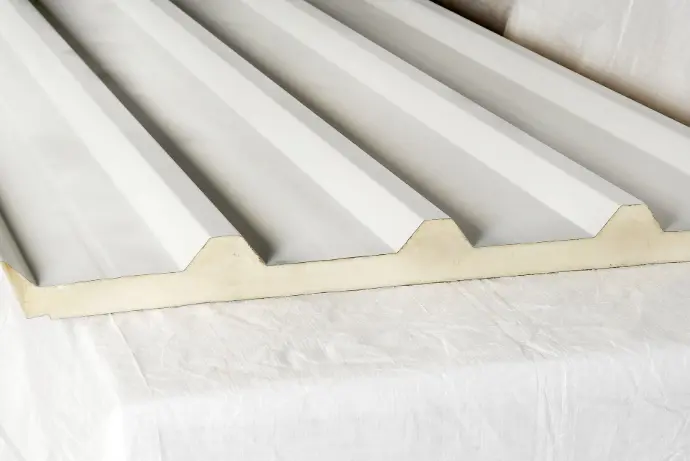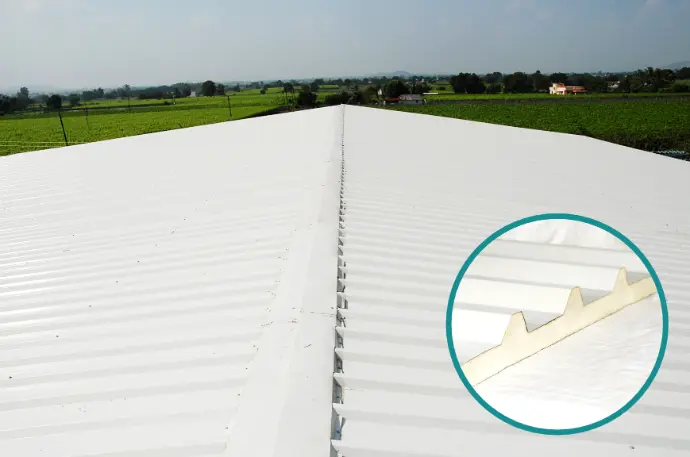PUF Insulated Roofing Panels
Applications of PUF Insulated Roof Systems
Cold Storage Roofing:
Essential for maintaining precise temperature control in perishable goods storage.
Industrial Warehouse Roofing:
Improve energy efficiency in large storage areas by providing robust thermal insulation.
Commercial Buildings:
Ideal for office complexes, malls, and other large-scale commercial projects.
Agricultural Sheds:
Effective in protecting sensitive produce such as fruits and vegetables, especially grapes.
Residential Structures:
Popular in the construction of energy-efficient homes, PUF roofing panels are used in farmhouses, resorts, and vacation homes for their excellent insulation and aesthetic appeal.
Key Features of PUF Insulated Roofing Panels
Exceptional Thermal Performance:
The low thermal conductivity of PUF insulated roofing panels ensures minimal heat transfer and consistent internal temperatures.
Lightweight yet Durable:
These panels reduce the overall structural load without sacrificing strength or resilience. The trapezoidal shape provides enhanced structural strength and load-bearing capacity, distributing weight evenly across the surface. This design also improves resistance to wind and weather, ensuring durability and stability
Waterproof and Weather-Resistant:
Closed-cell foam structure prevents water ingress, making it ideal for roofs exposed to rain and humidity.
Fire-Resistant Properties:
PUF roofing panels enhance building safety by offering fire-retardant qualities.
Eco-Friendly:
The energy-saving nature of PUF panels directly contributes to reduced carbon emissions, aligning with environmental sustainability goals.
Customization and Installation
Tristar’s PUF insulated roofing panels are customizable to meet specific project requirements. Whether it’s for cold storage, agricultural applications, or commercial buildings, we offer tailored solutions in terms of panel size, thickness, and design. Installation is seamless, ensuring tightly fitted panels that maintain a continuous thermal barrier, minimizing energy loss and enhancing structural integrity.


